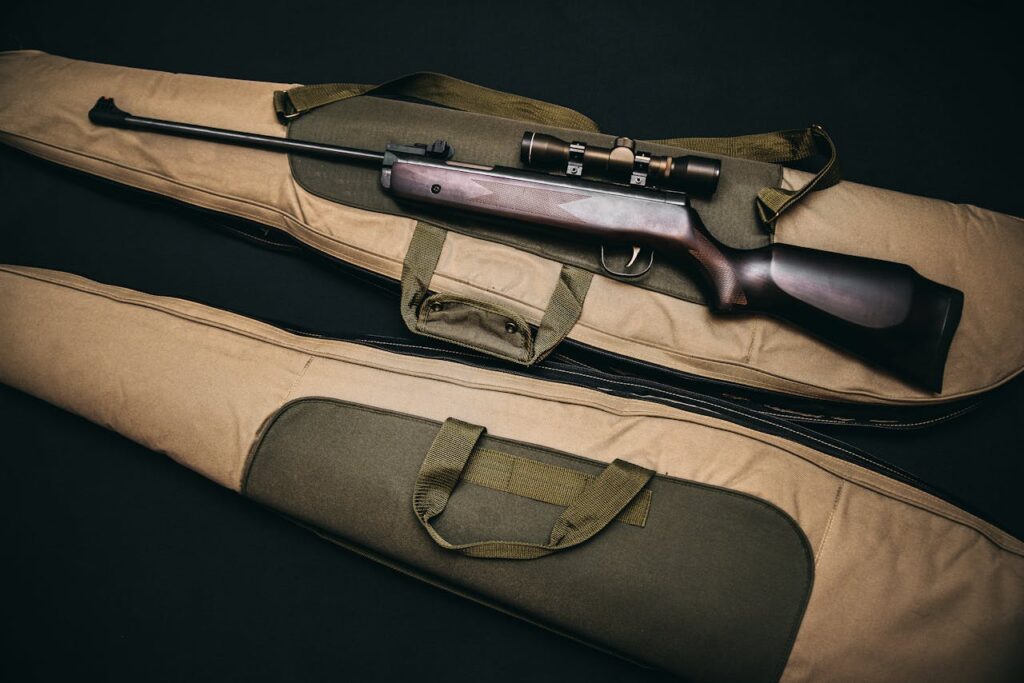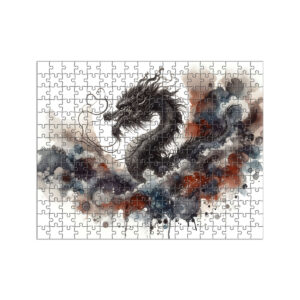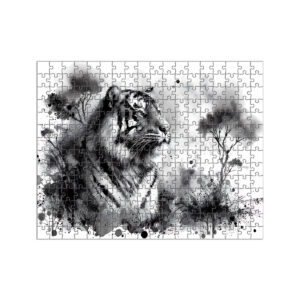
Explore & Play
Discover interesting topics and solve the accompanying crossword puzzle.
Weapon Crossword | History and evolution of weapons
Table of Contents
Weapon Crossword
You can either fill in the crossword puzzle directly on this page or click the button in the bottom right corner to print it for free.

Weapons in Warfare: From the Crossbow to the Modern Machine Gun
Weapons have always played a pivotal role in warfare, from the early days of hand-to-hand combat to the advanced technologies of modern warfare. The evolution of weaponry mirrors the changing nature of human conflict, as innovation and necessity have driven the development of new tools of destruction. In this article, we will explore the historical development of weapons, focusing on how they’ve evolved from the use of the crossbow to the modern machine gun.
As we delve into the history of these weapons, we will uncover the technological advancements, strategies, and pivotal moments that reshaped the battlefield. This article will also touch on the fascinating history behind various weapons, many of which appear in our “Weapons in Warfare” crossword puzzle, allowing you to test your knowledge as you read.
1. Ancient and Medieval Weapons: The Foundation of Warfare
The history of weapons in warfare begins in ancient times, where tools for survival quickly transformed into instruments of destruction. As early humans began organizing into societies and engaging in territorial disputes, weapons became crucial in securing power, resources, and survival. From the first crude weapons to more refined tools of war, these innovations laid the foundation for the weaponry we use today.
1.1 Early Bladed Weapons: Swords and Daggers
Among the first bladed weapons used in combat were swords and daggers, instruments designed for both cutting and thrusting. The sword became an iconic weapon in many cultures, from the long swords of medieval knights to the short, curved scimitars wielded by the ancient Persians. A sword not only symbolized strength but also social status, as only the wealthiest could afford to wield such finely crafted weapons.
Daggers, on the other hand, were often used as secondary weapons in close combat or in situations where stealth and surprise were essential. The dagger’s compact size made it a deadly weapon for assassinations or for defense when a larger sword wasn’t practical. Over the centuries, different regions developed their own variations of bladed weapons, and the dagger became a staple in both combat and ceremonial contexts.
1.2 The Evolution of Polearms: Spears and Halberds
Polearms, like spears and halberds, became integral to battle formations, allowing warriors to engage enemies at a distance. The spear, one of the oldest and most versatile weapons, was used by armies across the globe. Whether thrown or wielded in hand-to-hand combat, the spear allowed soldiers to keep enemies at bay while delivering deadly strikes.
The halberd, a combination of an axe and spear, emerged during the medieval period and became a symbol of power and defense. Its long reach and dual functionality made it highly effective in both infantry and cavalry battles. The halberd was especially popular among European armies, where it was used to fight off mounted troops or break through enemy lines.
1.3 Crossbows and Bows: Long-Range Weapons
The introduction of the bow and crossbow marked a significant leap in ranged combat, allowing warriors to strike from afar. The bow was first used by ancient civilizations, providing soldiers with the ability to engage their enemies at a distance, thus reducing the risk of direct confrontation. Its flexibility and accuracy made it indispensable in hunting and warfare.
The crossbow, which appeared around the 10th century, took the concept of ranged weapons further by increasing both power and precision. The mechanical nature of the crossbow allowed even those with little training to use it effectively, providing a tactical advantage on the battlefield. Crossbows were particularly effective in sieging and defending fortifications, as their bolts could penetrate armor and strike targets from great distances.
2. The Rise of Firearms: From Muskets to Rifles
As the world moved into the Renaissance and early modern periods, firearms began to replace traditional weapons in many armies. The development of gunpowder-based weapons revolutionized the nature of warfare, introducing new forms of combat and drastically altering battle strategies. Firearms allowed soldiers to engage the enemy from longer distances, and their destructive power rendered older weapons obsolete.
2.1 The Musket: Early Firearms in Battle
The musket, a large firearm that required significant skill and training to use, changed the landscape of battle in the 17th and 18th centuries. Muskets were slow to reload and less accurate than modern firearms, but they were capable of delivering powerful shots with greater range than traditional weapons like swords and spears. The musket’s introduction to battlefields signaled the decline of the knightly era and the rise of mass infantry formations.
The musket was often paired with a bayonet, a blade attached to the end of the gun, to provide close-quarters defense. This combination allowed soldiers to fire at enemies from a distance but also quickly transition to hand-to-hand combat when necessary.
2.2 Rifles and Pistols: Precision and Mobility
The development of rifles and pistols allowed for greater precision and mobility, particularly in the 19th century. Unlike the musket, which fired a round ball, the rifled barrel of a rifle imparted a spin on the bullet, increasing its accuracy over long distances. The invention of rifled barrels marked a major leap forward in firearm technology, enabling soldiers to hit specific targets with much greater precision.
Pistols, often carried as sidearms, provided soldiers with a compact weapon for close-quarters combat. Though less accurate than rifles, pistols became essential for personal defense and were often used in tandem with other firearms during battle.
2.3 The Role of the Bayonet in Close Combat
With the introduction of the bayonet, soldiers could now use their firearms for close-quarter fighting, extending their utility on the battlefield. The bayonet, which could be fixed to the muzzle of a musket or rifle, allowed soldiers to engage enemies in hand-to-hand combat when they ran out of ammunition or found themselves in close proximity to their foes. This hybrid of firearm and bladed weapon became a key feature in many armies during the 18th and 19th centuries.
3. Explosives and Blunt Force: The Deadly Range of Modern Weapons
Alongside firearms, explosive devices and blunt-force weapons became vital components of modern warfare, providing new ways to destroy and incapacitate the enemy. The introduction of explosives marked a dramatic shift in how battles were fought, as bombs and grenades allowed soldiers to target enemy fortifications and troops from a distance.
3.1 The Advent of Grenades and Bombs
Explosive devices such as grenades and bombs were first used in the early 20th century, delivering devastating impacts in both trench warfare and urban combat. Grenades, small explosive devices thrown by hand, were designed to incapacitate or kill enemies within close range. They became particularly common in World War I and were used in trenches to break through enemy lines.
Bombs, much larger than grenades, were dropped from aircraft or placed on the ground to destroy enemy infrastructure. Their ability to inflict widespread destruction on buildings, vehicles, and troops made them a primary tool of modern warfare.
3.2 Maces and Warhammers: Weapons of Blunt Force
While firearms and explosives dominate modern warfare, blunt force weapons like maces and warhammers still played a role in medieval and early modern conflicts. These weapons were designed to deliver crushing blows, often used to break through armor or incapacitate an enemy in hand-to-hand combat.
The mace, a heavy club with a spiked head, was particularly effective against knights wearing armor. The warhammer, with its hammer-like head and spike, was equally deadly in close combat. Although these weapons eventually gave way to firearms, they remain iconic symbols of medieval warfare.
4. The Machine Gun: The Turning Point of Modern Warfare
The development of the machine gun in the late 19th century marked a revolutionary shift in how wars were fought, providing soldiers with the ability to unleash rapid, sustained fire. This technological advancement drastically changed battle tactics, rendering traditional formations and strategies obsolete.
4.1 The Maxim Gun: The First True Machine Gun
The Maxim gun, invented in 1884, was the first machine gun capable of sustained fire, changing the nature of battle forever. Capable of firing hundreds of rounds per minute, the Maxim gun proved devastating in both World War I and subsequent conflicts. Its rapid firepower allowed soldiers to suppress enemy movements and provided a significant advantage in trench warfare.
As the Maxim gun evolved into more modern machine guns, it laid the foundation for the development of submachine guns and automatic rifles, which would become staples of 20th-century warfare.
4.2 The Role of Armored Vehicles in Modern Warfare
As machine guns evolved, so too did the development of armored vehicles designed to protect soldiers while allowing them to wield heavy firepower in combat. The introduction of tanks during World War I marked a new era in armored warfare, providing soldiers with mobility, firepower, and protection on the battlefield.
Armored vehicles became essential for modern armies, allowing them to break through enemy lines and engage in direct combat without the vulnerabilities of traditional infantry. Over time, advancements in vehicle armor and weaponry have led to even more powerful tanks and armored personnel carriers.
5. Special Weapons: From Throwing Stars to Tasers
Not all weapons used in warfare are firearms or traditional bladed weapons. Over time, a variety of specialized weapons emerged to provide tactical advantages in combat. These weapons may not be as widespread as guns or swords, but they have had a significant impact in specific situations.
5.1 The Shuriken: Throwing Stars in Ancient Warfare
The shuriken, a small, sharp throwing star, was used by ninjas and other warriors in ancient Japan to incapacitate enemies at a distance. Though primarily a stealth weapon, the shuriken was designed for distraction or injury, providing a quick, deadly option in close combat.
Though often associated with Asian cultures, the idea of throwing weapons has existed in many societies, with various cultures developing their own forms of projectile weapons.
5.2 The Role of Tasers and Non-Lethal Weapons
In more recent conflicts, non-lethal weapons like tasers have found a place in combat, used to incapacitate without causing long-term harm. Tasers use electrical pulses to temporarily disable a target, making them useful for situations where lethal force is not desired.
These non-lethal weapons are especially useful in policing or hostage situations, where the goal is to control a situation without causing fatalities. While not a primary tool of warfare, tasers are becoming increasingly common in various conflict scenarios.
6. Future of Warfare: From Drones to Directed Energy Weapons
As technology continues to advance, the weapons of tomorrow are becoming more precise and potentially more destructive, transforming the nature of combat. The future of warfare will likely involve even more specialized and high-tech weapons systems that can alter the course of battles without direct human involvement.
6.1 Drones: The New Frontier in Weaponized Warfare
Drones, or unmanned aerial vehicles (UAVs), are quickly becoming the future of warfare, allowing for precise strikes from the sky without risking human lives. Weaponized drones can be deployed for reconnaissance, airstrikes, and surveillance, providing real-time data to commanders while minimizing risks to personnel.
These drones are especially useful in asymmetric warfare, where combatants are spread across vast areas and conventional weapons might struggle to engage targets.
6.2 Directed Energy Weapons: The Future of Warfare
Directed energy weapons, such as lasers, are being developed for modern warfare, offering the ability to disable enemy systems and soldiers with high precision. These weapons use concentrated beams of energy to disable electronic equipment, vehicles, or even cause physical harm to enemy forces. Directed energy weapons could revolutionize the future battlefield, providing a new level of control and efficiency.
The Impact of Weaponry on Modern Warfare
The role of weapons in warfare has evolved dramatically throughout history, with each new technological advancement shaping the way wars are fought. From ancient bladed weapons to modern machine guns and drones, the history of warfare is intimately tied to the development of new and powerful tools of destruction. As we continue to innovate, it is clear that weapons will continue to shape the future of conflict.
Ready to put your knowledge of warfare weapons to the test? Play our crossword puzzle now and see how well you know the history of weapons and their role in warfare.
Share to...
I hope you enjoy the content.
Want to receive our daily crossword puzzle or article? Subscribe!
You may also be interested in
Share to…
Want to receive our daily crossword puzzle?
-
Jigsaw Puzzles
Twelve Zodiac Mice Ink Wash Jigsaw Puzzle 250 | 300 | 500 Pieces
kr 348,00 – kr 439,00Price range: kr 348,00 through kr 439,00 Select options This product has multiple variants. The options may be chosen on the product page -
Jigsaw Puzzles
Chinese Dragon Jigsaw Puzzle – Zodiac Series Art 250 | 300 | 500 Pieces
kr 348,00 – kr 439,00Price range: kr 348,00 through kr 439,00 Select options This product has multiple variants. The options may be chosen on the product page -
Jigsaw Puzzles
Zodiac Series Tiger Ink Puzzle – Black and White Art 250 | 300 | 500 Pieces
kr 348,00 – kr 439,00Price range: kr 348,00 through kr 439,00 Select options This product has multiple variants. The options may be chosen on the product page

















